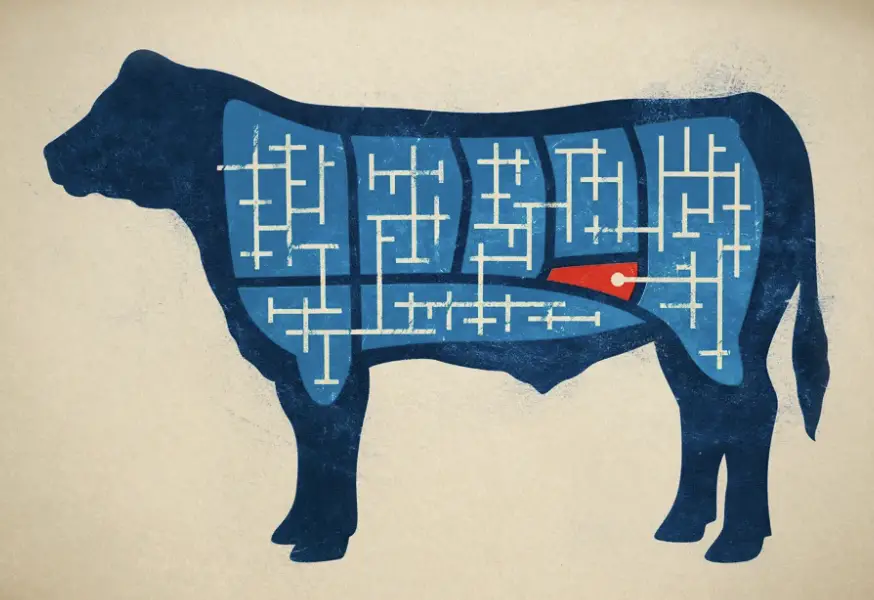
Bavette Steak: Unveiling the Hidden Gem of Butcher Cuts
When it comes to steaks, most people are familiar with popular cuts like ribeye, filet mignon, and New York strip. However, the world of beef offers a plethora of lesser-known, yet equally delicious, cuts that deserve the spotlight. One such hidden gem is the Bavette steak, a flavorful and tender piece of meat that has been cherished by chefs and steak enthusiasts for its exceptional taste and versatility. In this blog post, we’ll take you on a culinary journey to discover the Bavette steak, its unique characteristics, and why it deserves a place on your plate.
What is Bavette Steak?
The Bavette steak, also known as flap steak or sirloin tip, comes from the sirloin primal, located in the hindquarter of the cow. This lesser-known cut is a thin, long, and flat piece of meat with a coarse grain. The Bavette steak is prized for its intense beefy flavor and tender texture when cooked and sliced correctly.
Characteristics of Bavette Steak:
- Flavor Profile: Bavette steak boasts a robust and pronounced beefy flavor, making it a favorite among those who appreciate the essence of quality beef.
- Tenderness: When prepared and cooked properly, the Bavette steak can be surprisingly tender, especially when sliced against the grain.
- Versatility: The Bavette steak is incredibly versatile and can be cooked using various methods, including grilling, pan-searing, broiling, or sous vide.
- Affordability: Compared to the more popular steak cuts, the Bavette steak is often more affordable, making it an attractive option for those seeking great taste without breaking the bank.
Cooking the Perfect Bavette Steak:
Cooking the Bavette steak to perfection involves a few simple steps to ensure you get the most out of this flavorful cut:
1. Seasoning: Before cooking, season the steak generously with salt and pepper. You can also add your favorite herbs or spices to enhance the flavor further.
2. Resting Time: Allow the seasoned steak to rest at room temperature for about 30 minutes. This helps the meat cook more evenly.
3. Cooking Method: The Bavette steak is best cooked over high heat to achieve a perfect sear while preserving its tenderness. Grilling, pan-searing, or broiling are excellent choices.
4. Slicing Against the Grain: After cooking, it’s crucial to slice the Bavette steak against the grain. This technique shortens the muscle fibers, resulting in a more tender and enjoyable eating experience.
5. Resting Again: Allow the cooked Bavette steak to rest for a few minutes before serving. This resting period allows the juices to redistribute, ensuring a juicy and flavorful steak.
Serving Suggestions:
The versatility of Bavette steak opens the door to a myriad of serving possibilities. Here are some serving suggestions to tantalize your taste buds:
- Classic Grilled Bavette: Grilling the Bavette steak and serving it with a side of garlic butter mushrooms and a fresh green salad is a classic and delicious choice.
- Bavette Fajitas: Slice the cooked Bavette steak into thin strips and use it as a flavorful filling for fajitas along with sautéed peppers, onions, and your favorite toppings.
- Asian-inspired Stir-Fry: Slice the cooked Bavette steak and stir-fry it with vegetables and a savory soy-ginger sauce. Serve it over steamed rice or noodles for a delectable Asian-inspired meal.
- Bavette Steak Sandwich: Layer thin slices of Bavette steak on a crusty baguette with caramelized onions, arugula, and a creamy horseradish sauce for an indulgent steak sandwich.
In Conclusion:
The Bavette steak may be an underrated and lesser-known cut, but its exceptional flavor and tenderness make it a standout choice for any meat lover. As you explore the world of steak cuts, consider adding the Bavette steak to your culinary repertoire. Whether you’re grilling, pan-searing, or experimenting with different flavors, this hidden gem is sure to delight your taste buds and elevate your steak experience to new heights. So, embrace the Bavette steak and savor every juicy, flavorful bite. Happy cooking!






